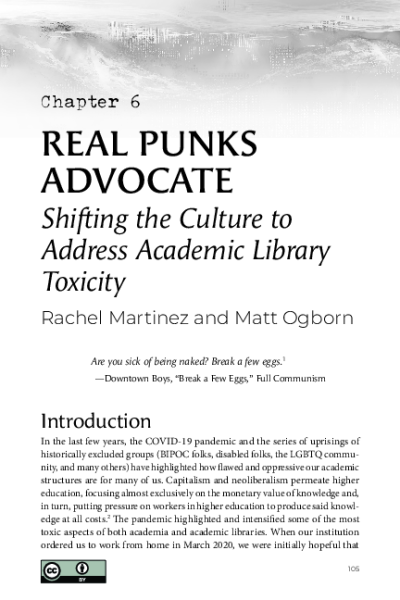Filtering by
- Member of: ASU Scholarship Showcase

Cities in the Global South face rapid urbanization challenges and often suffer an acute lack of infrastructure and governance capacities. Smart Cities Mission, in India, launched in 2015, aims to offer a novel approach for urban renewal of 100 cities following an area‐based development approach, where the use of ICT and digital technologies is particularly emphasized. This article presents a critical review of the design and implementation framework of this new urban renewal program across selected case‐study cities. The article examines the claims of the so‐called “smart cities” against actual urban transformation on‐ground and evaluates how “inclusive” and “sustainable” these developments are. We quantify the scale and coverage of the smart city urban renewal projects in the cities to highlight who the program includes and excludes. The article also presents a statistical analysis of the sectoral focus and budgetary allocations of the projects under the Smart Cities Mission to find an inherent bias in these smart city initiatives in terms of which types of development they promote and the ones it ignores. The findings indicate that a predominant emphasis on digital urban renewal of selected precincts and enclaves, branded as “smart cities,” leads to deepening social polarization and gentrification. The article offers crucial urban planning lessons for designing ICT‐driven urban renewal projects, while addressing critical questions around inclusion and sustainability in smart city ventures.`

Attitudes and habits are extremely resistant to change, but a disruption of the magnitude of the COVID-19 pandemic has the potential to bring long-term, massive societal changes. During the pandemic, people are being compelled to experience new ways of interacting, working, learning, shopping, traveling, and eating meals. Going forward, a critical question is whether these experiences will result in changed behaviors and preferences in the long term. This paper presents initial findings on the likelihood of long-term changes in telework, daily travel, restaurant patronage, and air travel based on survey data collected from adults in the United States in Spring 2020. These data suggest that a sizable fraction of the increase in telework and decreases in both business air travel and restaurant patronage are likely here to stay. As for daily travel modes, public transit may not fully recover its pre-pandemic ridership levels, but many of our respondents are planning to bike and walk more than they used to. These data reflect the responses of a sample that is higher income and more highly educated than the US population. The response of these particular groups to the COVID-19 pandemic is perhaps especially important to understand, however, because their consumption patterns give them a large influence on many sectors of the economy.



Chapter from the ACRL book Toxic Dynamics: Disrupting, Dismantling, and Transforming Academic Library Culture. This chapter provides a bit of background on punk and libraries, identifies some toxic library cultures, and then suggests concrete ways for library workers to disrupt these cultures while maintaining boundaries that are regularly violated in library work.

From Transforming Print: Collection Development and Management for Our Connected Future, edited by Lorrie McAllister and Shari Laster (Chicago: American Library Association, 2021).

Arizona State University (ASU) is known for both enormous size and scale, as well as excellence in research and innovation. These attributes are embodied in the ideal of the “New American University.” ASU Library, as a partner in the New American University, has reorganized itself, completed a large-scale renovation of its main library building, and created interdisciplinary divisions of librarians and other professionals, backed up by subject “knowledge teams” that address specific research needs of faculty and students. As a result, the library has become involved in nontraditional projects across the university. This article is useful for libraries seeking to remain relevant and align themselves with institutional priorities.

National and state organizations have developed policies calling upon afterschool programs (ASPs, 3–6 pm) to serve a fruit or vegetable (FV) each day for snack, while eliminating foods and beverages high in added-sugars, and to ensure children accumulate a minimum of 30 min/d of moderate-to-vigorous physical activity (MVPA). Few efficacious and cost-effective strategies exist to assist ASP providers in achieving these important public health goals. This paper reports on the design and conceptual framework of Making Healthy Eating and Physical Activity (HEPA) Policy Practice in ASPs, a 3-year group randomized controlled trial testing the effectiveness of strategies designed to improve snacks served and increase MVPA in children attending community-based ASPs. Twenty ASPs, serving over 1800 children (6–12 years) will be enrolled and match-paired based on enrollment size, average daily min/d MVPA, and days/week FV served, with ASPs randomized after baseline data collection to immediate intervention or a 1-year delayed group. The framework employed, STEPs (Strategies To Enhance Practice), focuses on intentional programming of HEPA in each ASPs' daily schedule, and includes a grocery store partnership to reduce price barriers to purchasing FV, professional development training to promote physical activity to develop core physical activity competencies, as well as ongoing technical support/assistance. Primary outcome measures include children's accelerometry-derived MVPA and time spend sedentary while attending an ASP, direct observation of staff HEPA promoting and inhibiting behaviors, types of snacks served, and child consumption of snacks, as well as, cost of snacks via receipts and detailed accounting of intervention delivery costs to estimate cost-effectiveness.

S-cysteinylated albumin and methionine-oxidized apolipoprotein A-I (apoA-I) have been posed as candidate markers of diseases associated with oxidative stress. Here, a dilute-and-shoot form of LC–electrospray ionization–MS requiring half a microliter of blood plasma was employed to simultaneously quantify the relative abundance of these oxidized proteoforms in samples stored at −80 °C, −20 °C, and room temperature and exposed to multiple freeze-thaw cycles and other adverse conditions in order to assess the possibility that protein oxidation may occur as a result of poor sample storage or handling. Samples from a healthy donor and a participant with poorly controlled type 2 diabetes started at the same low level of protein oxidation and behaved similarly; significant increases in albumin oxidation via S-cysteinylation were found to occur within hours at room temperature and days at −20 °C. Methionine oxidation of apoA-I took place on a longer time scale, setting in after albumin oxidation reached a plateau. Freeze–thaw cycles had a minimal effect on protein oxidation. In matched collections, protein oxidation in serum was the same as that in plasma. Albumin and apoA-I oxidation were not affected by sample headspace or the degree to which vials were sealed. ApoA-I, however, was unexpectedly found to oxidize faster in samples with lower surface-area-to-volume ratios. An initial survey of samples from patients with inflammatory conditions normally associated with elevated oxidative stress-including acute myocardial infarction and prostate cancer—demonstrated a lack of detectable apoA-I oxidation. Albumin S-cysteinylation in these samples was consistent with known but relatively brief exposures to temperatures above −30 °C (the freezing point of blood plasma). Given their properties and ease of analysis, these oxidized proteoforms, once fully validated, may represent the first markers of blood plasma specimen integrity based on direct measurement of oxidative molecular damage that can occur under suboptimal storage conditions.

In this paper, we present a Bayesian analysis for the Weibull proportional hazard (PH) model used in step-stress accelerated life testings. The key mathematical and graphical difference between the Weibull cumulative exposure (CE) model and the PH model is illustrated. Compared with the CE model, the PH model provides more flexibility in fitting step-stress testing data and has the attractive mathematical properties of being desirable in the Bayesian framework. A Markov chain Monte Carlo algorithm with adaptive rejection sampling technique is used for posterior inference. We demonstrate the performance of this method on both simulated and real datasets.